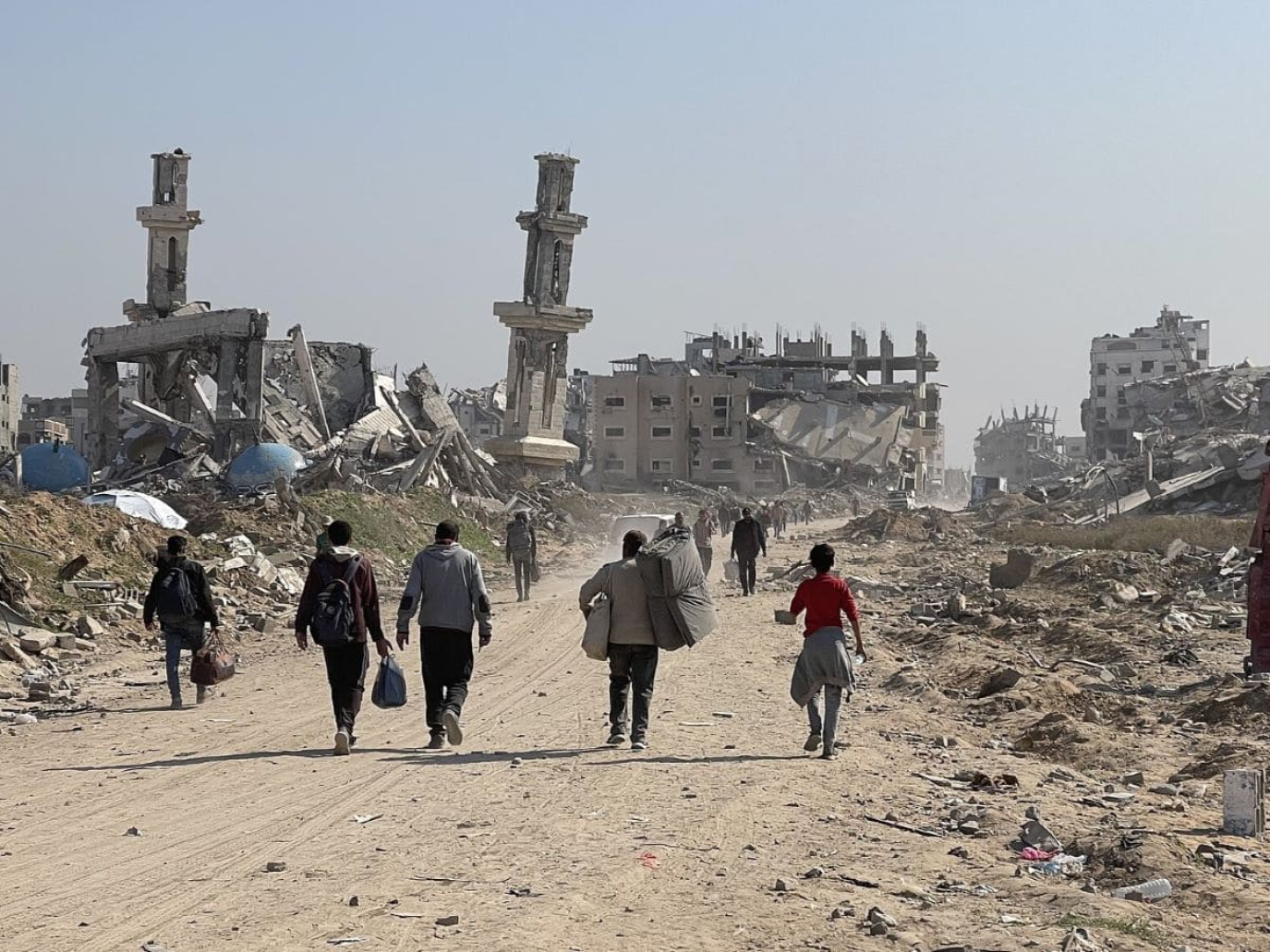The Israeli Defence Forces (IDF) announced that a ceasefire in the Gaza Strip would come into effect at 12:00 local time, marking the official start of the first phase of the plan negotiated by the United States and approved by Israel and Hamas on Wednesday night.
The ceasefire will also allow around 600 trucks per day to enter the Strip, carrying food, medicines and basic necessities, a quantity never before achieved since the beginning of the conflict, due to the blockades imposed by Israel. These humanitarian consignments, however, are only a first sign of relief for the Palestinian population. Exhausted by more than two years of violence, they have suffered more than 67,000 casualties, according to United Nations estimates; 83% of whom were civilians, as reported by a survey conducted by +972 Magazine, Local Call and The Guardian on internal databases of the Israeli secret services.
The truce, however, remains fragile, as demonstrated by the multiple bombings carried out by Israel yesterday on the Gaza Strip, even after the agreement had been officially announced. The IDF has also stated that its troops will continue to operate “to eliminate any immediate threat”, retaining strategic control of the southern areas and the so-called “buffer zone” along the border of the Strip.
What is going to happen now?
According to the Times of Israel, in the hours following the announcement, hundreds of residents began returning to the north of Gaza after months of forced displacement. Images broadcast by local media show a long march of people walking along the coastal road of al-Rashid, heading towards what remains of their destroyed homes. Israeli Prime Minister Benjamin Netanyahu himself has already threatened that “if this goal is achieved the easy way, that’s great. Otherwise, it will be achieved by force.”
In a message released to the media, responding to analysts who claimed that “that there is no way to bring back the rest of the hostages without giving in to Hamas’s main demand”, Netanyahu declared that “from our big friend President Trump, this powerful combination will cause Hamas to give back all of our hostages, while the IDF remains deep inside the Strip and holds all the key positions.”
What does the agreement between Israel and Hamas entail?
The agreement, the result of mediation by the United States, Egypt, Qatar and Turkey, envisages in its first phase the total cessation of hostilities and the release of all Israeli hostages held by Hamas, in exchange for the release of Palestinian prisoners detained in Israeli prisons.
Within 72 hours, Hamas must release the 48 hostages still in its custody, including 20 people believed to be alive and 28 bodies of hostages believed to be deceased. Israel, on their part, will release 250 prisoners serving life sentences and approximately 1,700 prisoners arrested after 7 October 2023, including all women and minors.
The Israeli army will withdraw gradually. In the coming weeks, troops are expected to leave the centre of the Strip, while maintaining control of areas along the border and the Philadelphi corridor. Donald Trump's proposed plan calls for the complete demilitarisation of Gaza and the disarmament of Hamas in subsequent phases.
An international task force comprising 200 US military personnel and forces from Egypt, Qatar, Turkey and the United Arab Emirates – the largest multinational deployment in the region since 2014 – will monitor the implementation of the agreement and compliance with the truce.
A monitored truce for an uncertain future
The entry into force of the ceasefire certainly marks a turning point in the conflict, but it does not guarantee its end. The agreement establishes a 72-hour monitoring period, during which the joint task force will monitor compliance with the terms. Israel will continue to guard key border areas and conduct attacks if “any immediate threat to be eliminated” emerges.
The political future of Gaza remains uncertain. Trump's plan, announced at the end of September, calls for Hamas to be excluded from the future government of the Strip and for its complete demilitarisation, but it is unclear whether these conditions will be upheld after this initial phase.
For the civilian population, however, survival is the priority. After months of bombing, the arrival of humanitarian aid and the suspension of Israeli violence are only a first step towards stability.
Cover: photo Jaber Jehad Badwan via Wikimedia Commons



